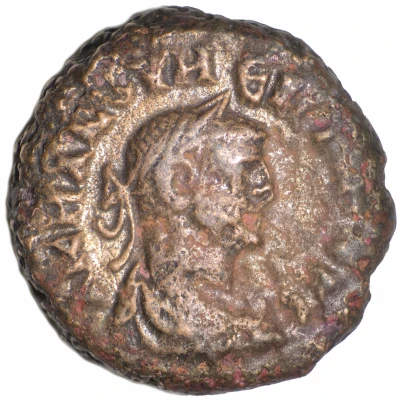


Tetradrachm - Carus Dikaiosyne, Alexandria
| Billon | 8 g | 19 mm |
| Issuer | Alexandria (Egypt) |
|---|---|
| Emperor | Carus (Marcus Aurelius Carus) (282-283) |
| Type | Standard circulation coin |
| Years | 282-283 |
| Value | Tetradrachm (4) |
| Currency | Drachm |
| Composition | Billon |
| Weight | 8 g |
| Diameter | 19 mm |
| Shape | Round (irregular) |
| Technique | Hammered |
| Orientation | Medal alignment ↑↑ |
| Demonetized | Yes |
| Updated | 2024-10-06 |
| Numista | N#91748 |
|---|---|
| Rarity index | 92% |
Reverse
Dikaiosyne standing left holding scales & cornucopiae, date left
Script: Greek
Lettering: LΑ
Translation: Year 1
Comment
Carus(Latin: Marcus Aurelius Carus Augustus;[1][2] c. 222[3] – July or August 283) was Roman Emperor from 282 to 283, and was 60 at ascension. During his short reign, Carus fought the Germanic tribes and Sarmatians along the Danube frontier with success. He brought stability in the empire and died in 283 aged 61.
During his campaign against the Sassanid Empire, he sacked their capital Ctesiphon, but died shortly thereafter. He was succeeded by his sons Carinus and Numerian, creating a dynasty which, though short-lived, granted further stability to a resurgent empire.
https://en.wikipedia.org/wiki/Carus
Interesting fact
One interesting fact about this coin is that it features an image of the goddess Dikaiosyne (Justice) on one side, which was a common motif on coins issued by the Roman Emperor Carus. This suggests that the coin was minted during Carus' reign (282-283 AD) and that the people of Alexandria, where the coin was minted, placed a high value on the concept of justice. Additionally, the use of Billon, a copper and silver alloy, was a common practice during this time period, as it was a more affordable alternative to pure silver or gold coins.



